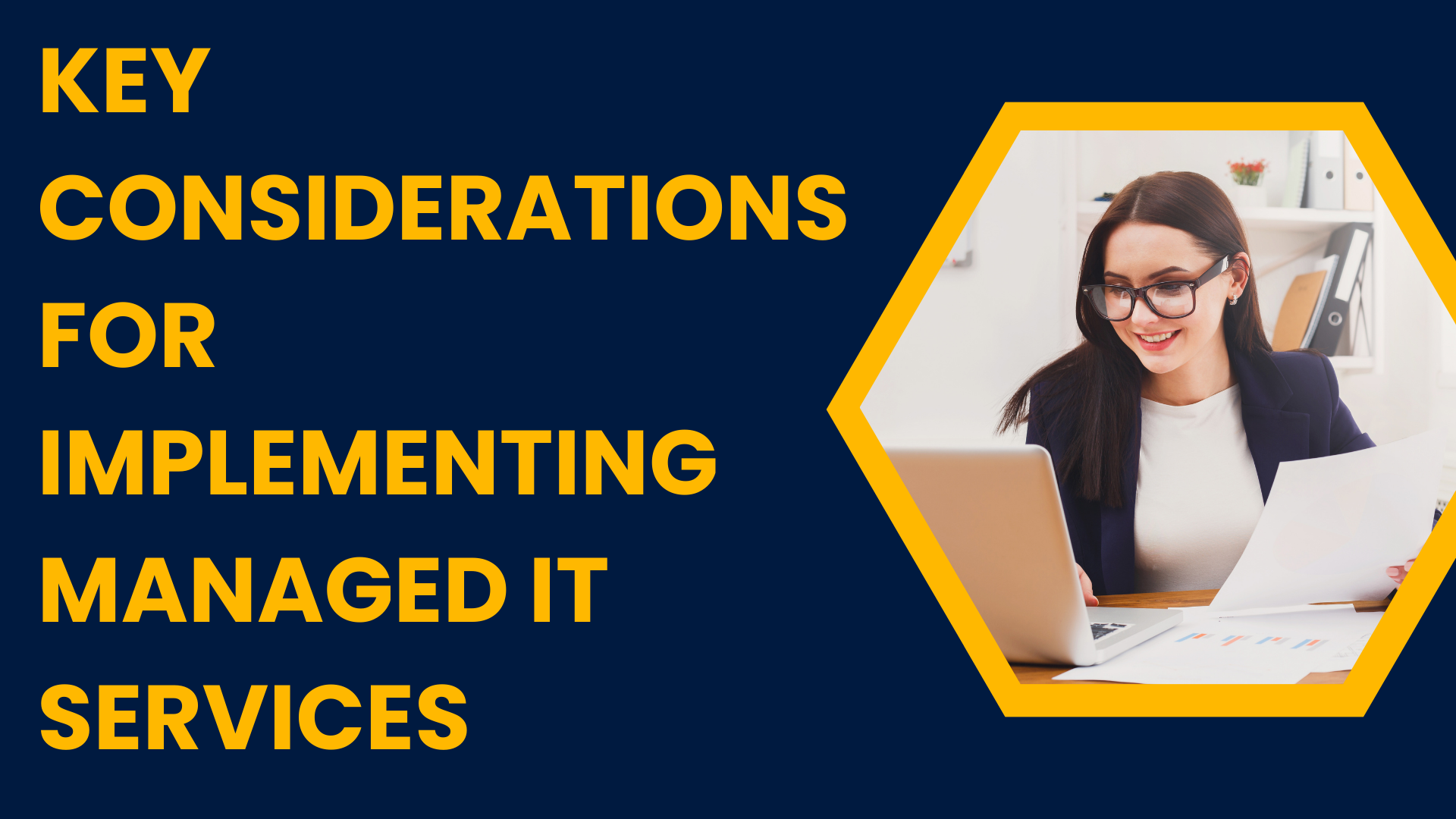In the rapid technology era today, the increased embrace of managed IT services is being seen by organizations to gain productivity and digitization of their businesses. Implementing managed IT is a real game-changer for all sizes of businesses, but it needs to be implemented with caution, thoroughness, and with a comprehensive study of all the things involved. This article will explore the key factors that organizations should keep in mind when implementing managed IT services
Understanding Managed IT Services
Managed IT is the act of delegating a wide range of IT functions to certified experts. These professionals are also known as Managed Service Providers (MSPs). They will be in charge of ensuring that the organization's IT infrastructure, systems, and applications are being handled correctly. By funding them, companies can put their efforts into what they are successful in while at the same time they ensure that their IT needs are met in a great and efficient way.
Assessing Organizational Needs
The first step in creating a managed IT service is for an organization to know and check its needs. This is the process of the present inventory which includes assessing the problems identified and figuring out the areas that would be the most efficient after outsourcing. So that a business can catch up to an MSP it needs to have a precise approach to their targets and the expected services upfront.
Choosing the Right MSP
Choosing an appropriate Managed Service Provider is without any doubt the key to the success of a managed IT implementation. Organizations are required to research the MSP's experience, skill, and track record. It is not only necessary to take into account whether they offer the services you need and the support level they provide you. MSPs must also be capable to enhance the services you offer as your company is growing.
Defining Service Level Agreements (SLAs)
Service Level Agreements with clarity and detail are fundamental for a successful relationship between managed IT and your company. These documents specify the actual kinds of services to be provided and the metrics for service quality, the deadlines for responses to issues and other expectations that are key. Specific SLAs state that the organization and the MSP are (not only?) on the same page as far as responsibilities and deliverables go.
Integration with Existing Systems
By providing managed IT services in a non-exceptional way, organizations can make sure their existing systems and processes are operating as smoothly as possible. On the other hand, they should take into consideration the methods of interaction between the new services and the existing software, hardware, and workflows. That said, a comprehensive integration strategy should be planned in close cooperation with the MSP to make any future changes easier.
Staff Training and Change Management
When implementing managed IT services, employees may face the need to adjust to changes in the way they work and interact with the technology available at that moment. To make sure that the employees are sufficiently acquainted with the new technology and systems, the company has to invest in well-rounded training programs. Also, a change management strategy that is well paced could help people become more open to new ways of working.
Cost Considerations
While managed IT services often bring considerable cost benefits to businesses in the long-term, they need to scrutinize the financial implications before they implement them. This includes comparing and understanding various pricing models offered by MSPs, getting a clear idea of upfront costs, and evaluating the expected return on investment. The important thing here is to find the right balance between cost consideration and service depth and quality.
Monitoring and Evaluation
After the introduction of IT management services, it is necessary to continuously monitor and evaluate them to ensure that the partnership is fulfilling the needs of the company. Regular status reports on the basis of specified parameters and SLAs not only can point out all the possible weak spots but also can bring in the necessary actions to get the managed IT services into alignment with the company's overall plan.
Conclusion
Such services can do wonders to the companies promoting the efficiency, security, and access to particular skills. Nevertheless, the biggest challenge is in the proper and meticulous technical planning of all factors. By addressing these key considerations, organizations can place themselves in a position to convert their managed IT into the best version possible and contribute to the success of the digitizing economy. Partnering with a reputable managed IT provider like Milnsbridge Managed IT can alleviate much of this burden by providing expert guidance, tailored solutions, and ongoing support to ensure optimal IT performance and security.

















Post Comments